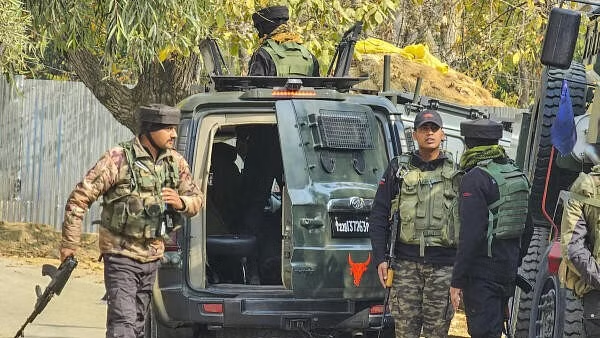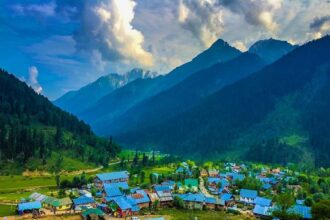In the annals of Jammu and Kashmir’s tumultuous history, January 2025 emerges as a watershed moment, marking an unprecedented decline in violence. The region, long synonymous with conflict, now stands at the cusp of a transformative journey towards peace. With merely three fatalities recorded—one security force personnel and two terrorists—the landscape of violence has dramatically reshaped itself, offering a glimmer of hope where once only uncertainty prevailed.
The Human Story Behind the Statistics
Behind these numbers lies a profound narrative of resilience and change. Pangala Kartheek, the young soldier from Andhra Pradesh, represented the newest generation of defenders—educated, motivated and committed to national integration. His sacrifice in the dense forests of Zaloora Gujjarpati symbolized the ongoing challenges, yet the context of his encounter spoke volumes about the diminishing intensity of conflict.
The two terrorists neutralized near the Line of Control were not merely statistical entries but complex human stories of misguided ideologies and systemic challenges. Their elimination represented not just a security victory, but a nuanced reflection of changing ground realities in the region.
Historical Trajectory of Conflict
The journey from 288 fatalities in 2002 to just three in January 2025 represents more than a numerical reduction—it’s a testament to comprehensive strategic interventions. Each passing year witnessed a gradual erosion of terrorist infrastructure, a systematic dismantling of cross-border support networks and a growing disillusionment among potential recruits.
The mid-2000s marked a critical turning point. Security agencies began adopting more sophisticated, intelligence-driven approaches. Gone were the days of brute-force confrontations; instead, precision, technology, and community engagement became the new mantras of conflict resolution.
Technological Surveillance Revolution: A Digital Shield Emerges
The security apparatus in Jammu and Kashmir has undergone a profound technological transformation, converting traditional border management into an intricate, multi-layered digital defense ecosystem. Advanced surveillance technologies have created an almost impenetrable electronic shield along sensitive borders, effectively rendering conventional infiltration methodologies obsolete. The integration of cutting-edge technologies like thermal imaging cameras with 20-kilometer ranges, AI-powered drone surveillance, and quantum-encrypted communication networks has fundamentally redefined border security paradigms.
These technological interventions represent more than mere hardware deployments; they symbolize a comprehensive reimagining of security infrastructure. Machine learning algorithms now predict potential infiltration patterns with unprecedented accuracy, while advanced seismic sensors can detect underground movements that would have remained unnoticed in previous security architectures. Satellite-based real-time monitoring systems provide continuous, comprehensive situational awareness, eliminating traditional blind spots in border surveillance.
Border Management Transformation: The High-Tech Security Corridor
The Line of Control (LoC) has been dramatically reimagined as a high-tech security corridor, where every kilometer is monitored through an intricate network of intelligent sensors, cameras and tracking systems. The traditional concept of physical patrolling has been fundamentally augmented by technological interventions that provide real-time, comprehensive situational awareness.
This transformation extends beyond mere technological deployment. Each sensor, each drone, and each communication network represents a strategic node in a complex, interconnected security grid. The 24×7 drone surveillance covering entire border regions is not just a technological marvel but a testament to India’s evolving national security strategy. Automated threat detection systems and predictive intelligence gathering mechanisms work in perfect synchronization, creating a dynamic, responsive security environment that can anticipate and neutralize potential threats before they materialize.
The integrated communication networks connecting multiple security agencies ensure that information flows seamlessly, eliminating historical communication gaps and creating a unified, synchronized security mechanism. This approach represents a paradigm shift from traditional, siloed security models to a holistic, interconnected defense strategy that can rapidly adapt to emerging challenges.
Visible Change
Perhaps the most profound change occurred not in military strategies but in social dynamics. The youth, historically vulnerable to radicalization, now found themselves increasingly integrated into mainstream opportunities. Skill development programs, entrepreneurship support, and targeted educational interventions created alternative narratives to terrorist recruitment.
Local communities, once caught between terrorist pressures and state interventions, began actively participating in peace-building processes. The growing trust in democratic institutions and increasing economic opportunities systematically eroded the social base that had historically sustained militancy.
Psychological Landscape of Peace
The reduction in violence transcended physical security. It represented a collective psychological shift—a growing belief that dialogue, development, and democratic processes could address historical grievances more effectively than armed resistance.
The January 2025 data is not merely a statistical anomaly but a potential harbinger of sustainable peace. It suggests that with consistent, nuanced, and compassionate approaches, even the most entrenched conflicts can be transformed.
Looking Forward
Challenges remain. External attempts at destabilization, deep-rooted historical narratives, and the complex geopolitical dynamics of the region continue to pose potential risks. However, the trajectory is clear—Jammu and Kashmir is progressively moving from a conflict zone to a potential peace laboratory.
The three fatalities in January 2025 are not just numbers. They are punctuation marks in a evolving narrative of hope, resilience, and potential reconciliation. They whisper a promise of a future where security is not defined by the absence of violence, but by the presence of opportunity.







